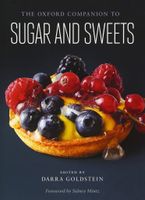Advertisement
Ancient and Classical Literature
Published 2015
The early history of sweets in literature is hardly distinguishable from the early history of sweets themselves, since much of our knowledge about ancient confectionery derives from imaginative writing. The first references to sweets appear in the Hindu Vedas (ca. 2000–800 b.c.e.). See hinduism. The Rig Veda describes the ancient Aryans as driving their chariots “while drinking honey, listening to the beautiful humming of the bees, with their chariots also humming like bees, drinking milk laced with honey.” Cane sugar appears first in the Atharva Veda, used as a metaphor for love: the lover offers to enclose his beloved in a ring of sugarcane to both protect and entrap her. Specific sweets figure prominently in the Hindu epic Ramayana; for instance, Rama and the other princes of the narrative are conceived after their mothers eat magic portions of kheer, or rice pudding. Ganesh, the elephant god who was the legendary writer of the other major epic of the subcontinent, the Mahabharata, is associated with a gluttonous passion for modaka, a sweet dumpling still made during ceremonies to worship him. Numerous references to sweets occur throughout ancient Indian literature. See india and modaka.


